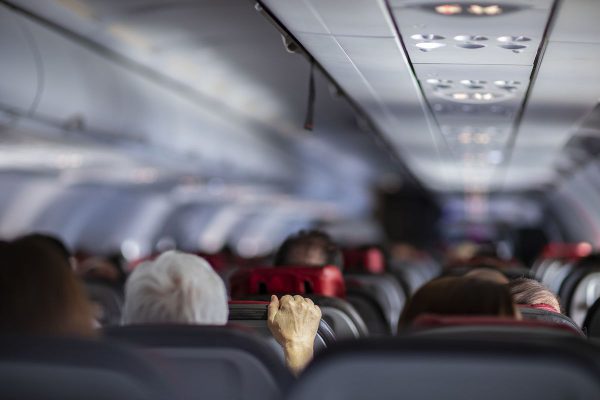CHIANG RAI, 2 July 2020: It used to take a fire alarm to clear an airport concourse. Today even a muffled sneeze will do the trick.
Just mimicking the pre-sneeze spasm will cause a stampede and clear occupied seats for the elderly warrior quicker than adopting a fixed bayonet charge with your walking stick.

We are all a little edgy about crowded places, airports and flying. It’s more than six months since I boarded a flight and I am in no hurry to return to a disruptive experience, the uncertainties over quarantine and being cooped up in a confined aircraft cabin for hours knowing the SARS-CoV-2 virus could be lurking close by.
If you ask experts, is it safe to fly the chances you will get two opposing opinions? Those on the payroll of aviation organisations claim the air purifying system on an airline delivers air fit for a hospital operating theatre. As minuscule as it might be, Covid-19 gets trapped in the HEPA filters that dump it dead and dusted out of the exhaust. Then in the opposite camp, independent experts say once you board a plane the risks of infection inevitably rise due to the lack of social distancing. You are sitting elbow distances apart. Droplets carrying Covid-19 could be diffused in your direction landing on your hands or face. And who wants to book a middle seat anyway. If you are the poor soul squeezed on both sides by obese passengers you will swear this seat should have been scrapped years ago. Airlines tell us they can’t fly without the middle seat. Profits evaporate, and as long as passengers are happy imitating sardines in a tin, the much-maligned middle seat is going nowhere.
Last week, a celebrated travel writer from one of the UK’s daily newspapers surprised the BBC TV anchor when he said airports and aircraft are chalk and cheese regards Covid-19 safety.
He admitted he felt safe commuting to and through the airport concourse but “to be honest once you are in the aircraft, it’s chaos, everyone is close up and confined, it cannot be as safe.”
He has a point airports are practising physical distance and introducing a contactless experience with facial recognition technology, contactless security screening and sneeze guard protectors at counters. Security officers patrol the terminal looking for passengers without masks.
Passengers must wear masks in the aircraft, but the problem remains that even the minimal one-metre social distancing is challenging to achieve on an aircraft. So while airlines are working around the clock to minimise the risks, they haven’t entirely won us over yet. They hope that pent up demand for so-called “revenge travel” will tip the balance. “What the heck let’s fly whatever the risk, we need a break.”
Don’t sneeze at the gulf between the perceived safety of an airport and that of an aircraft. It’s real and diminishes the desire to travel any time soon. Better save up the cash, look after our jobs and wait for a vaccine to come to our salvation.
The International Civil Aviation Organisation recommendations for airlines attempt to minimise infection risks and maintain distancing.
Recommendations
Always check-in your luggage.
Passengers should wear face coverings in the airport and on aircraft.
Minimise face-to-face contact with staff.
Passengers should remain seated as much as possible.
The crew should ensure no queueing or crowding near toilets. Passengers should request to use the toilets to allow adequate cleaning between use.







